In this article we will describe the most popular types of house siding options that homeowners have in North America and also in many other places of the world.
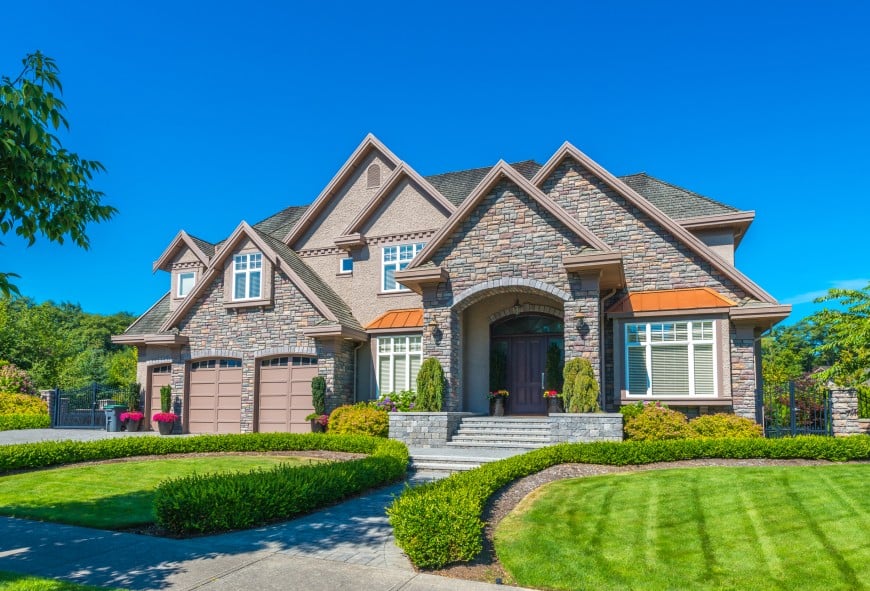
Specifically, we will describe each siding material, discuss the pros and cons of each one etc. Make sure to read the whole post for getting an overall knowledge of the best house siding materials and options in case you are planning to replace or install a new siding for your home.
Once upon a time, homeowners were too concerned about keeping their homes tightly sealed, closed to weather elements and structurally sound to spend time worrying about appearances.
It hasn’t been that many years since houses were clad and finished with anything homeowners could find in the way of free materials, and there was a time a coat of paint was all that was necessary to completely change the look of a façade.
Time has passed. Home exteriors have changed. Trends have come and gone and even the attitudes of homeowners have changed.
Exterior appearance grew more important in terms of status within communities and complied with changing attitudes by trying new materials, including siding.
It’s a necessary solution to many problems and in some cases, a lifesaver in terms of resale benefits and maintenance requirements. Even the history of home siding is fun to read.
A short history of different types of house siding
Wood Prevalence in 18th and 19th Centuries
During the 18th and 19th century, the U.S. was awash in wood, thus the ability to make one’s own paints using old world recipes remained the only decorating option for homeowners.
Tour Colonial Williamsburg, vintage homes and historic neighborhoods and you’ll spot some of the finest examples of the wood-exterior era: “painted ladies.” These classic houses were decorated with many vivid paint colors, giving every home a unique and distinct personality.
But for all of it’s virtues, wood construction had limitations (fire; insulation; bugs) and from time-to-time, lumber availability became problematic.
Add all of these factors into the equation and you can see why the availability of clay and construction of kilns and molds capable of producing bricks became a popular alternative for homeowners eager to have their houses stand for generations.
From airplanes to homes – Metal and Aluminum Siding
According to home historians, materials capable of turning the exterior of homes into beautiful and distinctive residences became old school in the eyes of homeowners from the moment they saw early examples of pre-fabricated siding.
This revolution is credited to Jerome Kaufman. The serviceman learned how to bake colors into sheets of aluminum that was cut into sections to make airplane sections. Why not try this same approach for houses, he thought?
Kaufman worked on prefabricated aluminum sheet ideas, started a siding company and it took next to no time before metal cladding swept across post-WWII America.
Kaufman’s metal siding delivered benefits over wood frame exteriors. From better insulation to affordability, his siding gave homes distinct looks so homeowners no longer had to choose between wood and brick.
Siding materials become more diverse
Despite the acceptance of aluminum siding as the efficient, attractable and affordable alternative to wood, innovators continued to work with new materials.
Vinyl siding arrived on the scene in the 1960s and became a low-cost way to give houses facelifts. Twenty years later, fiber-cement was introduced by a clever Australian.
Known for its durability and the material’s versatility–it could be patterned to resemble wood–fiber-cement joined brick, wood, aluminum and vinyl as another option for homeowners.
In 1973, U.S. Census Bureau statistics named brick veneer the most popular home exterior material. Wood returned to favor around 1980 and held its own until vinyl siding began to turn the tide and overtake it.
By the year 2000, vinyl was king as fiber-cement grew in popularity. These days, homeowners may also opt for metal, stucco and stone. And you thought siding was dull and boring!
Types of House Siding: Which is right for you?
Making a siding decision for your home is no easy job. It’s a major investment, but in return, you enjoy a beautiful exterior, expanded home value, your power bills could be lowered and there’s no putting a price on the pleasure you get from having a home that garners lots of admiration from passers-by and envious neighbors.
The following represent a range of materials. Match them to your budget, taste and future plans.
Vinyl siding
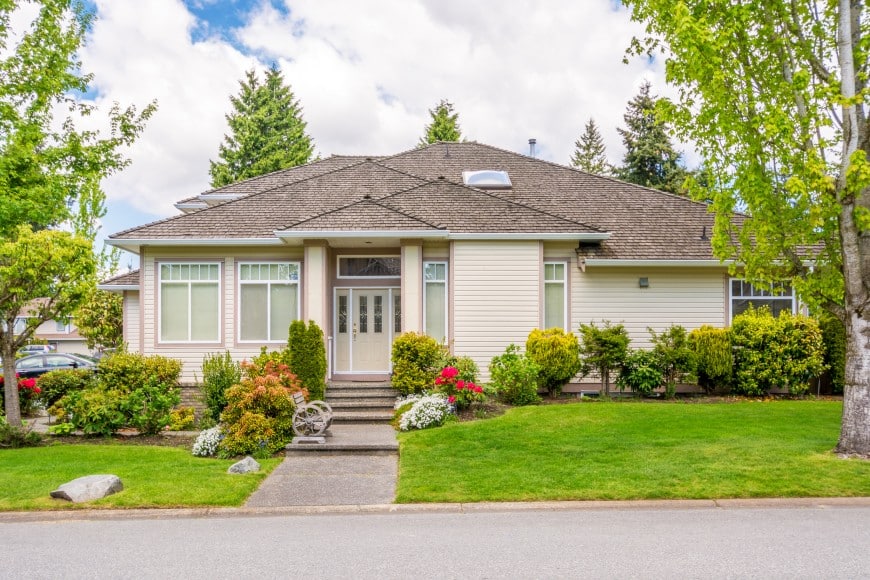
Types of Vinyl Siding:
- Board and Batten
- Liquid
- Dutch Lap
- Seamless
- Solid Core
- Log
- Shake
- Generic
Description of Vinyl Siding:
Vinyl siding is made of heated polyvinyl chloride (PVC) to which pigments are added during the blending stages. Once the resin mixture is bonded, it’s extruded through a die or poured into sheets using a mold. Those sheets are then subjected to embossing which gives them texture and patterning.
Pros of Vinyl Siding:
- Vinyl comes in many colors and it’s durable.
- It isn’t susceptible to rot or termites unless the exterior sustains damage.
- Since color is baked in, even if it’s scratched, color isn’t compromised.
- Vinyl withstands temperature and climate extremes.
- It a highly-affordable solution for home exteriors in need of help.
Cons of Vinyl Siding:
- Vinyl is not always watertight; poor application can compound the problem.
- Colors can fade over time despite being baked in.
- Extreme weather could trigger dents and cracks.
- May not be the best option if you’re going for a high-end look.
- Not the best choice in extremely cold climates. Other materials insulate better.
Metal siding
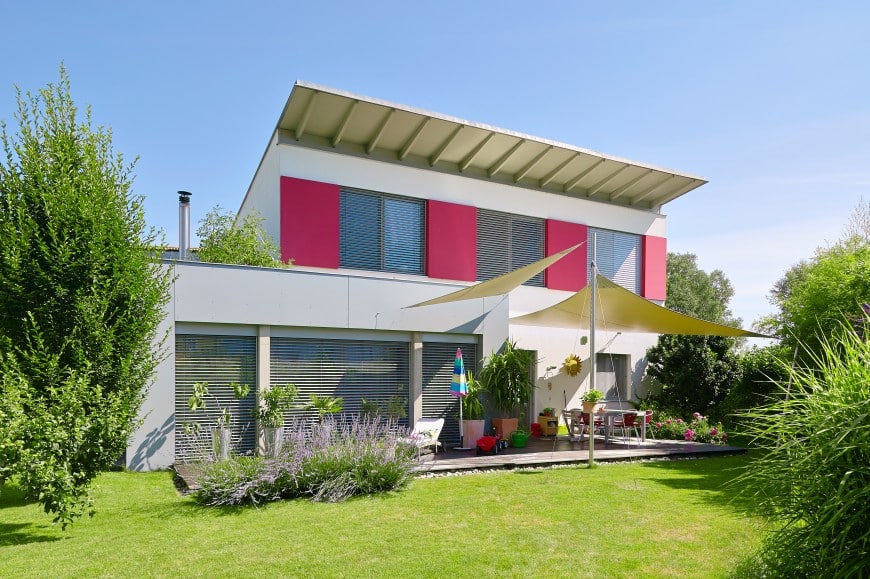
Types of Metal Siding:
- Steel
- Lap
- Corrugated
Description of Metal Siding:
While aluminum launched the metal siding industry, steel has become a material of choice for homeowners wishing to avoid the signs of wear exhibited by a soft metal like aluminum.
The biggest selling point of steel is that it’s recyclable and its long-term life expectancy surpasses that of other types of siding.
The fabrication process includes melting raw materials in a crucible, pouring molten product into a mold and cooling it. The remaining “ingot” is rolled through a press to desired thickness and shipped in flat sheets or coiled rolls.
Pros of Metal Siding:
- An excellent choice if pests and termites are prevalent in your area.
- Made of recycled materials so this type of siding is 100-percent renewable in most cases.
- The paint on metal siding may not crack, peel or fade for up to 50 years.
- Sheets won’t rot or twist over time and steel holds color better than aluminum.
- The perfect solution for homeowners who are eager to go green.
Cons of Metal Siding:
- Steel siding could be susceptible to rust, even if treated with rust-repellent coatings.
- Doesn’t stand up to coastal assaults: salt sprays, dampness and fogging accelerate rusting.
- Metal is usually more expensive than aluminum and vinyl.
- While thicker, it’s harder and more time-consuming to install.
- Metal doesn’t offer the best insulating properties and it can expose occupants to more street noise.
Fiber-cement siding
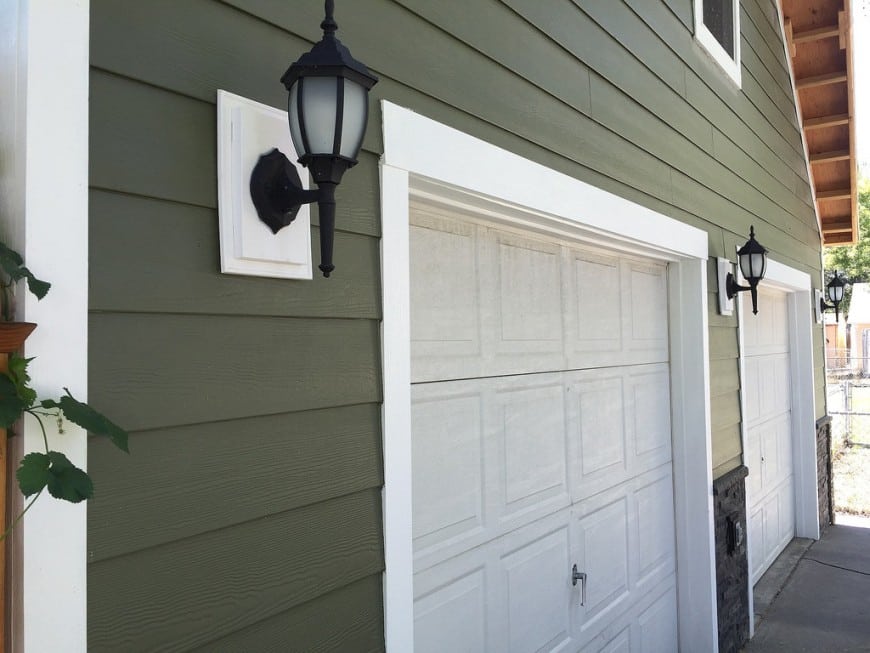

Types of fiber-cement siding:
- Clapboard
- Sheets
- Shingles
Description of fiber-cement siding:
According to experts at This Old House.com, fiber-cement siding is the great equalizer because it offers durability, good looks, affordability and maintenance-free benefits.
This siding material is made by dissolving wood pulp in water, mixing the pulp with Portland cement (limestone, clay, iron or a mix) and either fly ash or silica. Growing popularity is likely to make it homeowners’ first siding choice down the road.
Pros of fiber-cement siding:
- Termites don’t attack this material due to the presence of cement.
- Fiber-cement won’t rot over time.
- Easily sustains the highest winds and extremes in cold.
- Available in so many styles, colors and designs, you may not be able to choose.
- Despite having many design options, fiber-cement remains affordable.
Cons of fiber-cement siding:
- Requires expert installation by professionals due to the nature of the material.
- This siding is extremely heavy; averaging about 2.5-pounds per square foot.
- Some manufacturers only offer 15-year warranties against flaking and fading.
- If you don’t regularly prune plants around the home’s periphery, this siding can dry out at the foundation.
- Caulked joints must be inspected every few years for deterioration.
Wood siding
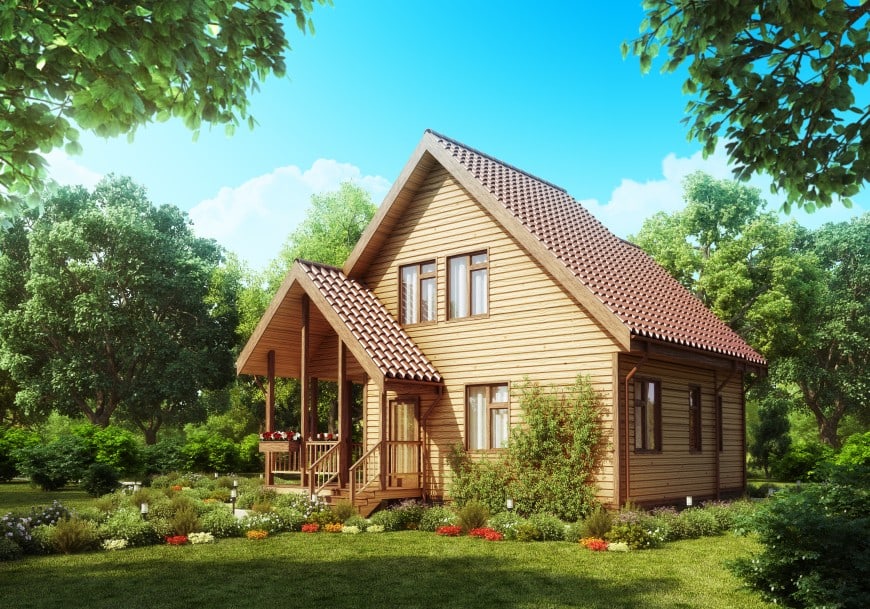

Types of Wood Siding:
- Board and Batten
- Clapboard
- Plywood
- Hardboard
- Shingles
- Engineered
Description of Wood Siding:
Traditional wood siding is made by selecting lumber for uniformity and thickness and installing individual boards over a pre-built frame, starting at the base of the exterior. These sections can be mounted vertically or horizontally to produce different looks.
Manufactured wood is a cheaper alternative made by extracting wood chip fibers, adding wax and resins and using molds, heat and pressure to craft panels.
Pros of Wood Siding:
- Readily available domestic and imported lumber gives homes a nostalgic, vintage look reminiscent of the past.
- Quick installation means the job is done faster than other siding choices.
- It’s easy to replace one area without removing an entire wall if damage occurs.
- Real wood siding is preferred by environmentalists who seek materials that are sustainable.
- Engineered wood is versatile, less expensive and it won’t attract termites like real wood.
Cons of Wood Siding:
- May crack, warp and/or rot if a painting or staining schedule isn’t adhered to over time.
- Most likely to sustain water damage of all the sidings on the market.
- Insects—especially termites—gravitate to wood, so expect to keep pest control specialists on speed dial.
- A volatile lumber market is constantly being subjected to price and supply fluctuations.
- This siding is the most likely to catch fire and burn quickly.
Aluminum Siding
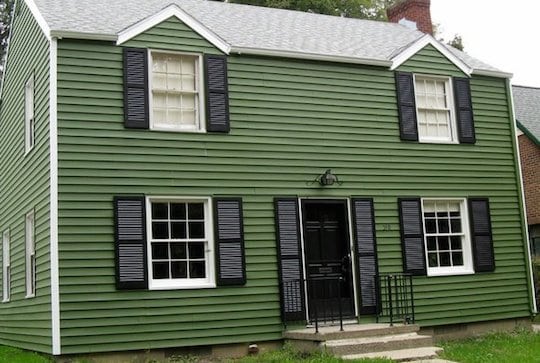
Types of Aluminum Siding:
Sold by thickness that range from 0.4-inches to 53-gague. The standard thickness is 44-gague.
Description of Aluminum Siding:
As the original metal material used to make siding for residences, aluminum has held its own over the years as new materials have entered the home siding market.
Originally crafted by smelting raw aluminum and then hammering it into sheets, siding panels may be joined together by welding. Today’s aluminum siding manufacturing process is faster and less labor intensive, yet the original fabrication idea remains the same.
Pros of Aluminum Siding:
- Available in so many grades, there’s an affordable option for every home cladding project.
- Opt for 53-gague aluminum and you may not have to re-side for 35 years; possibly longer.
- Insulates better than vinyl, so cost savings on power bills could be appreciable.
- Forget water and moisture issues; aluminum won’t swell, rot, rust or promote mildew growth.
- Aluminum is lightweight, easy to install and recyclable.
Cons of Aluminum Siding:
- Because color must be baked into aluminum, the potential for fading is higher than other metals.
- Exposure to extreme elements may leave a dull, chalky coating over the exterior of the home.
- Use extra-thin aluminum and your siding may be subject to unsightly scratches.
- This metal isn’t as aesthetically pleasing when compared with other metal sidings.
- High winds can cause aluminum siding to “ping” as the metal expands and contracts.
Brick Siding
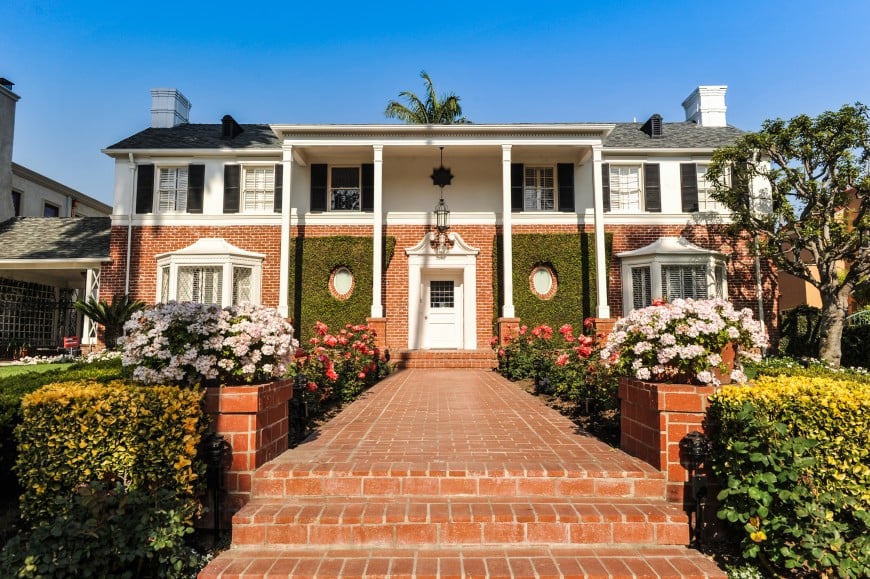
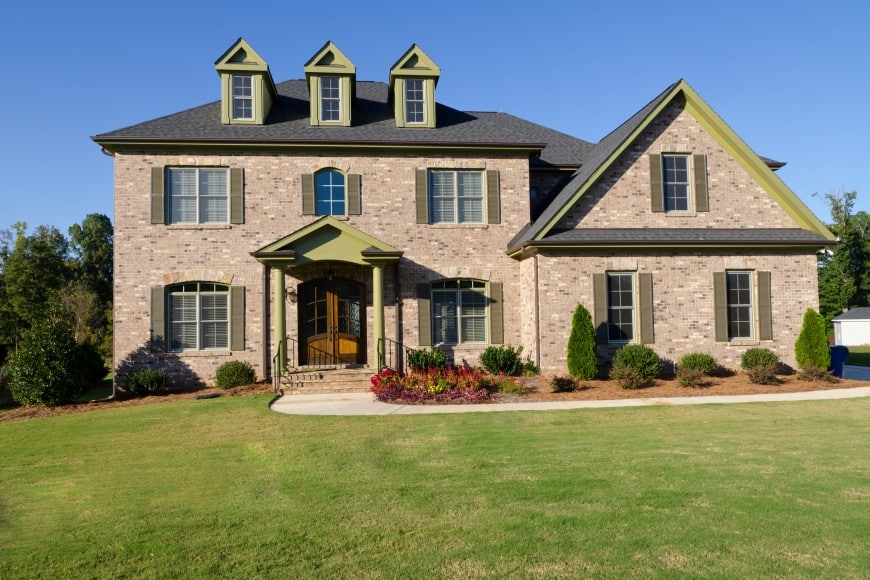
Types of Brick Siding:
Bricks fall into two classes: unburnt/sun-dried or burnt.
Description of Brick Siding:
Despite the passage of thousands of years, bricks are still being made in much the same way: raw materials and clay are crushed and ground together with liquid agents to produce a smooth slip that is then put through an extrusion process before being poured into molds and fired in a kiln.
According to the website How Products are Made.com, “by the year 2025 brick manufacturers may be firing their brick with solar energy.”
Pros of Brick Siding:
- Maintenance-free, brick never needs painting or frequent cleaning.
- Brick won’t rot, fade, peel or dent like other siding types.
- Save cash on power bills; brick is a natural insulator so you can maintain affordable thermostat settings.
- You could get a homeowner’s insurance discount if you add brick siding.
- Brick exteriors tend to have higher resale value than houses clad with other sidings.
Cons of Brick Siding:
- Masonry can deteriorate over time so you must inspect mortar joints as brick ages.
- Heavy brick can stress foundations; always ask the contractor to assess this chance.
- If brick siding is damaged, replacing the entire wall may be your only option.
- Brick siding is expensive in terms of both materials and labor.
- Imitation brick siding alternatives could make you regret having spent so much on real brick!
Stucco Siding
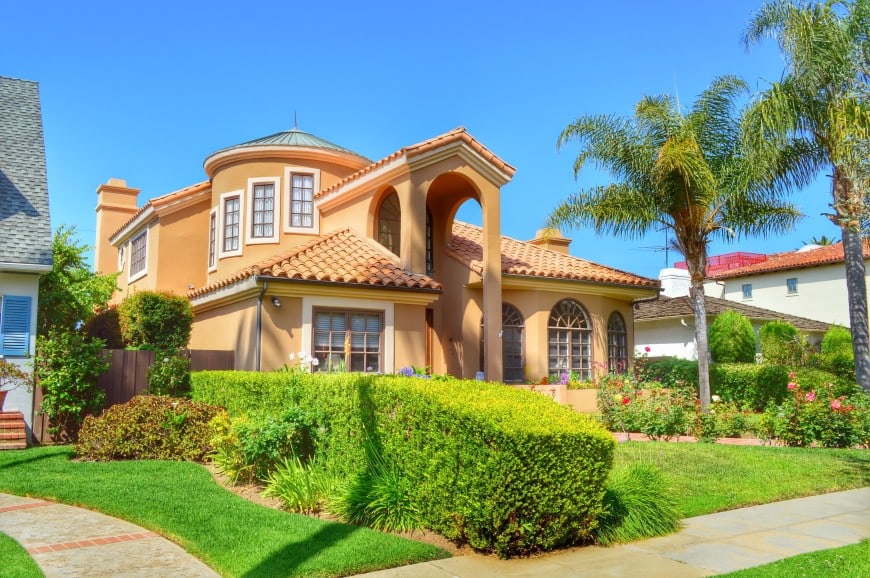
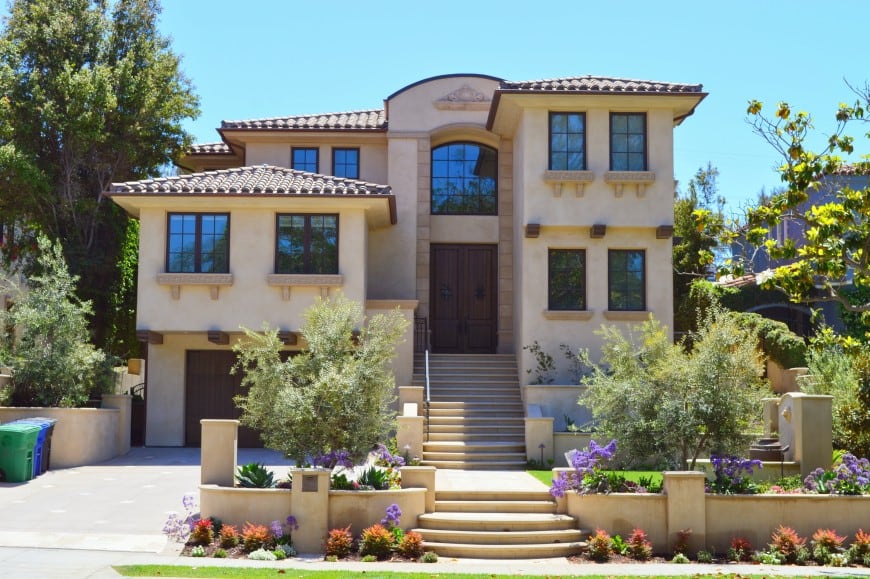
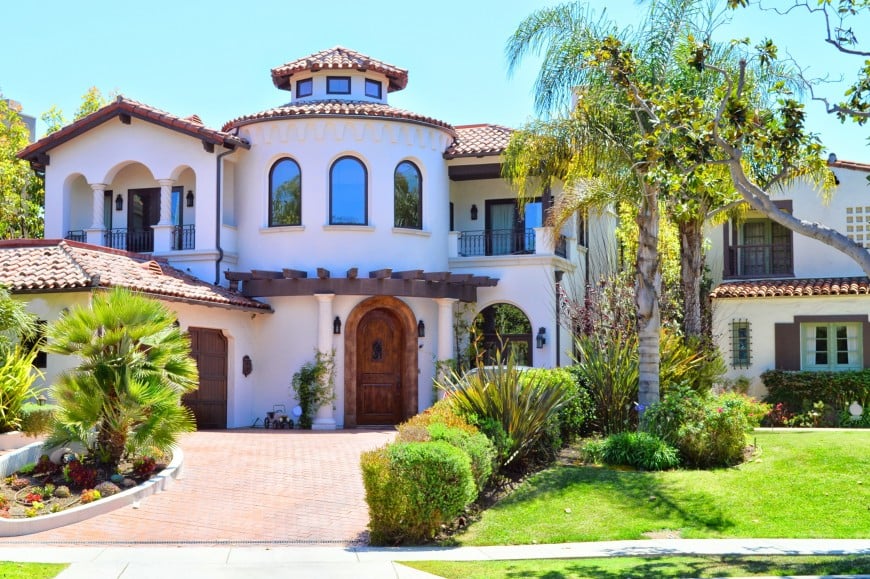
Types of Stucco Siding:
- Natural
- Synthetic
- Hybrid
Description of Stucco Siding:
For homeowners seeking a classic southwest architectural look, stucco siding can’t be surpassed.
Natural stucco is made by mixing Portland cement, limestone, water, sand and additives to produce a thick adobe clay.
Proper installation requires both a vapor barrier and wire mesh to prepare the surface for stucco in three coats: scratch, brown and finish. Each serves a specific purpose making it a labor-intensive process.
Texturing can be added after the third coating is applied. Manufacturers have begun to make one-coat synthetic stucco that saves time and money.
Pros of Stucco Siding:
- If the shape of your home suggests “southwest adobe,” stucco makes the perfect siding style.
- Application is shorter than brick and stone so you get an all-natural look that’s less expensive.
- Durable and requiring little maintenance, stucco stands up nicely to weather fluctuations and extremes.
- Stucco fireproofs a home and rebuffs insects so a building is safer on both accounts.
- In general, it costs less than brick and stone as well as some wood, vinyl and aluminum sidings.
Cons of Stucco Siding:
- Because stucco never has to be painted, you could get bored with your exterior look over time.
- Not recommended for areas of the country where structures expand and contract, leading to cracks.
- Application is not for the DIYer; to achieve a proper finish, it’s wise to pay for a stucco professional.
- Painting stucco could make the surface susceptible to water intrusion and premature peeling.
- Shouldn’t be considered for areas of the country with consistent, heavy rainfall.
Stone/stone-veneer siding
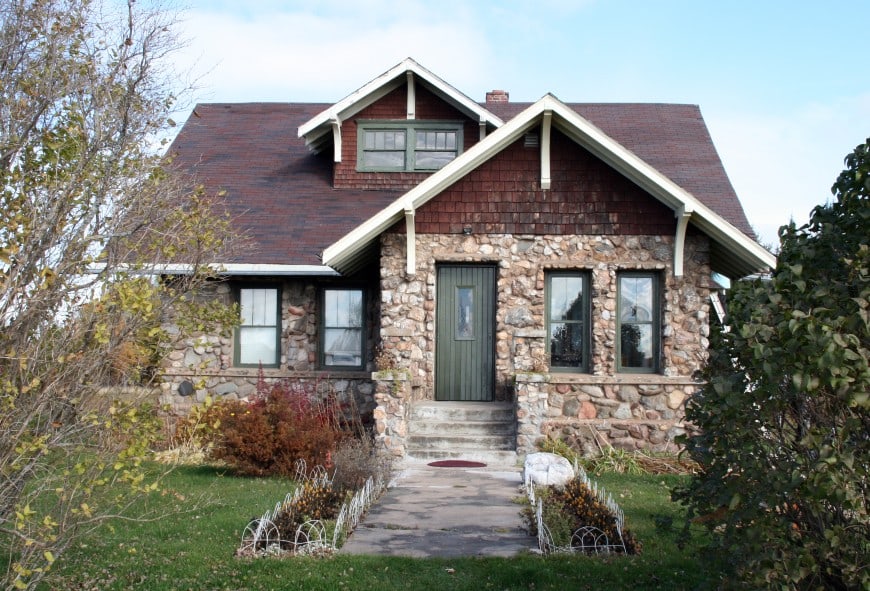
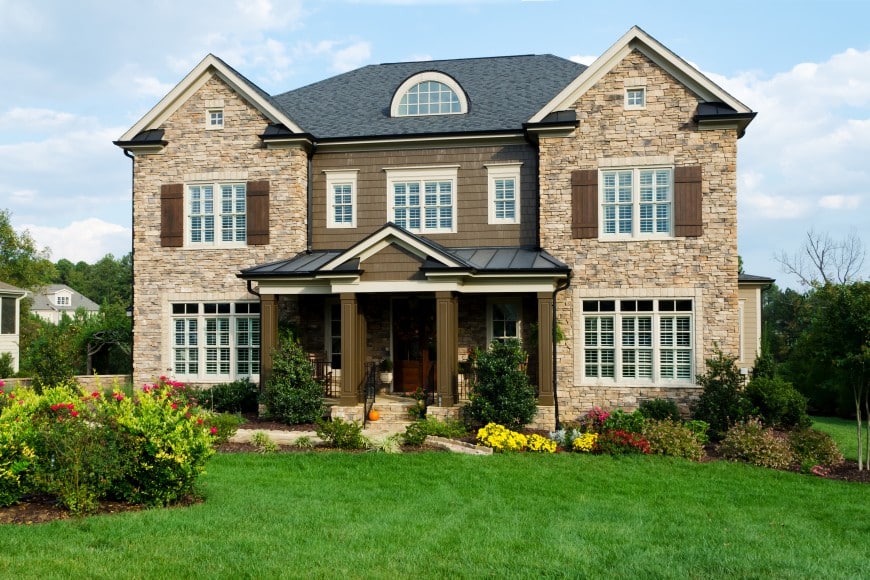
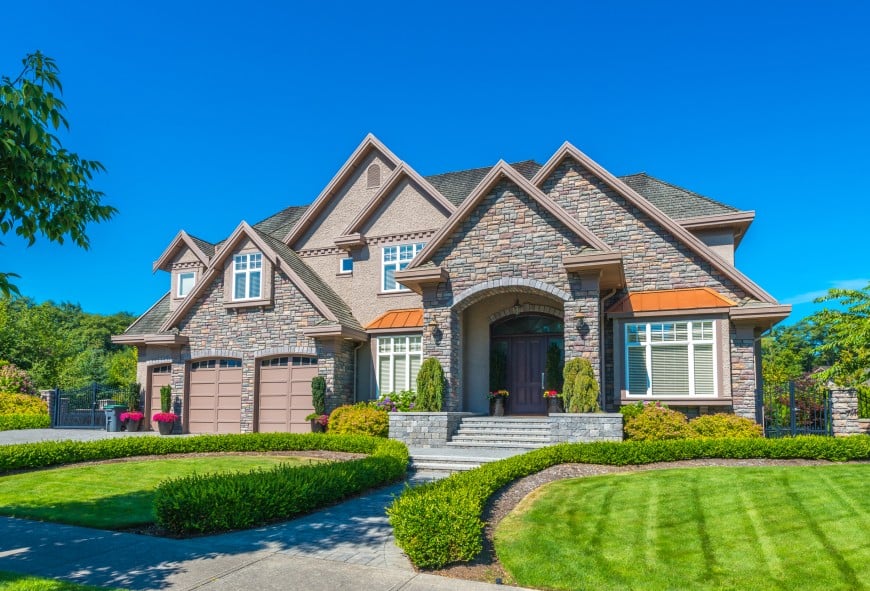
Types of Stone Siding:
- Natural
- Cultured
- Solid
- Polyurethane-based
- Veneers
Description of stone siding:
Expect long and pricey installation and material costs if you opt for natural, solid or cultured stone because it takes precision and time to properly complete a stone siding job.
Poly-based stone starts as a liquid amalgam poured into molds that produce panels for fast, relatively inexpensive installation.
Stone veneer is produced by mixing lightweight concrete with polymers and pigments. The mix is poured into rubber bas relief molds and attached to exteriors using mortar.
Pros of Stone Siding:
- Nothing is more dramatic, rich-looking and classic than an elegant, natural home stone exterior.
- Quarried stone is the highest-grade of material but the finished look is well worth the price.
- Opt for a cultured or veneer product to get a great, high-end look that costs less than real stone.
- Thick and weighty real stone stands up to the worst Mother Nature can deliver.
- Real stone siding can drive the value of your home up by impressive numbers.
Cons of Stone Siding:
- Prepare to spend a bundle on material and labor for real stone and a hefty sum for high-end veneers.
- Natural stone requires precise installation so it takes longer to finish the job and costs more.
- Like brick, the home’s shell must be assessed to make sure it can handle the weight of real stone siding.
- Stone veneer must be properly installed or moisture can collect leading to the potential for frame rot.
- Veneer costs from 40- to 70-percent less than real stone but it’s still not cheap.
Engineered Wood Siding
Description
Engineered wood siding is made of composite wood materials, which are blends of fibers from different wood types. They’re usually made from leftover products during traditional wood production, materials that would otherwise go to waste.
Pros of Engineered Wood Siding
Engineered wood siding is more affordable than traditional wood siding in terms of material cost (a square foot can cost anywhere between $3 to $8) and installation costs.
Engineered wood is more eco-friendly than traditional wood. It is made from the lumber industry’s waste products, salvaging materials that would otherwise go in the dump. It is also more energy-efficient than traditional wood. Not only will the environment benefit, so will your wallet.
Finally, engineered wood siding is more durable than traditional wood. The fibers are coated with additional resin that protects against stormy weather, damp conditions, and pests.
Cons of Engineered Wood Siding
One of the biggest drawbacks of engineered wood siding is its relative newness. Newer varieties have not been on the market long enough to test their durability and see if they’ve overcome the moisture problems that plagued first models.
Although experts estimate that engineered wood siding can last for several decades, they don’t know for sure yet.
Engineered wood siding also looks artificial to the discerning eye. If you are looking for a rustic, natural style, engineered wood siding looks too uniform to mimic the natural whirls and differences of traditional wood.
Insulated Vinyl Siding
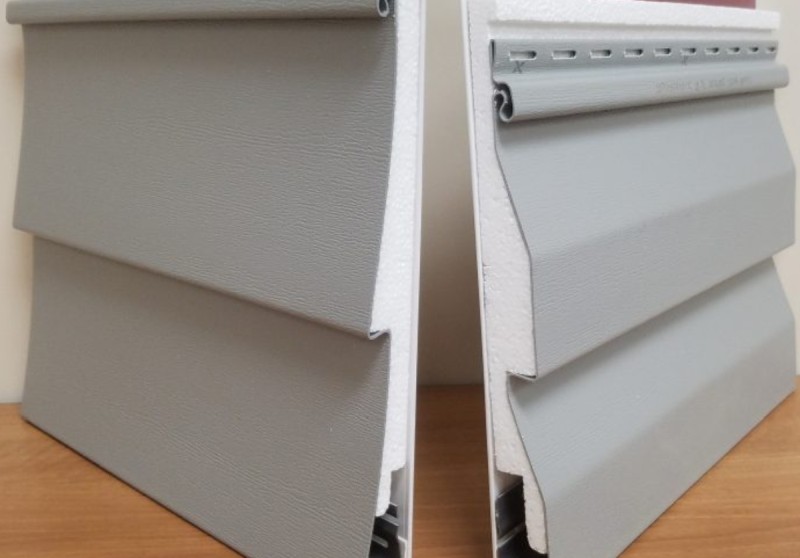
Description
Insulated vinyl siding is vinyl siding with rigid foam insulation on the back end. Rigid foam board is a newer construction material used to make homes more energy-efficient and comfortable.
Pros of Insulated Vinyl Siding
The extra foam insulation is one of the most important pros of insulated vinyl siding. It helps make your home more energy-efficient, which helps both the environment and your heating bills. Improving energy efficiency can also help you improve your interior temperature control.
Even though it is practical, that does not mean that insulated vinyl siding compromises on appearance. You can get this siding in a variety of colors ranging from a subdued charcoal to bright barn red.
Companies can now manufacture more colors and mimic the appearance of wood thanks to the insulation, which protects the vinyl from damage from high temperatures.
Cons of Insulated Vinyl Siding
One of the drawbacks of insulated vinyl siding is its cost, which ranges between $4 to $12 per square foot. It is more expensive than traditional vinyl siding or engineered wood siding.
Several seemingly unrelated factors could make the price even higher, such as the color of the siding (darker colors cost more) and the remoteness of your home.
Insulated vinyl siding is also more complicated to install. You will probably need to hire professionals and it may take them several days because of the complicated steps involved.
They may even need to repair your exterior walls first because any damage under the existing siding will affect the vinyl.
Concrete
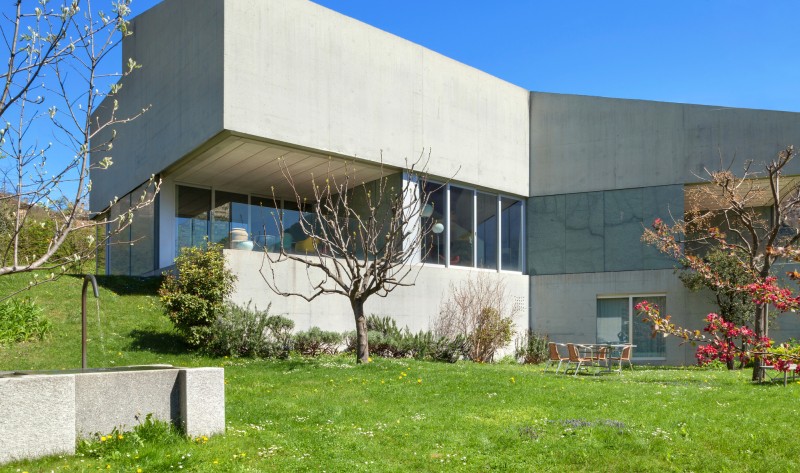
Description
Although many people are moving toward other siding materials, concrete and stucco are still popular choices for exterior walls.
Most concrete sidings are actually made of stucco, which is a paste of cement, fine sand, lime, and water. Pure concrete is usually used for foundations and flooring.
Pros of Concrete Siding
There is a reason why both concrete and stucco have been in use for so long. The material is strong and durable.
Applying concrete and stucco is easy for contractors and even experienced amateurs. All you need to do is smear the paste along the exterior wall for it to stick.
Stucco is an excellent choice because of its breathable qualities. It allows water to evaporate instead of trapping it, which protects your home against moisture damage.
Cons of Concrete Siding
Concrete needs some kind of support to act as a siding. It needs to be applied to a wooden or brick wall to reach its potential.
While stucco was prized for its unique rough texture, many people consider its appearance to be outdated these days, so its decorative qualities are a drawback more than a benefit.
Everlast Composite Siding
Description
Everlast composite siding is made from polymer resins, inorganic materials, and acrylic colorants that combine to create an extraordinarily durable PVC siding material.
Pros of Everlast Composite
Everlast’s strength is its main advantage over the competition. The material is highly durable against extreme weather, temperature changes, and sunlight.
The acrylic top layer is UV-resistant, does not fade over time, and requires minimum maintenance. The company also says that its siding is resistant to water and pests.
Everlast’s siding lasts for a long time without causing headaches for homeowners. All you need to do is lightly wash the exterior on occasion, no need to paint or caulk it. Once you install it, you have permanent peace of mind.
The company is so confident in their siding that they offer a lifetime warranty.
Cons of Everlast Composite
One of this material’s only drawbacks is the cost. The material costs about $5 to $10 per square foot, which is pricier than other siding materials but pays for itself over time thanks to the lack of maintenance.
Hardie Board Siding
Description
Hardie Board siding, sometimes called fiber cement siding, is made of a mixture of Portland cement, cellulose fibers, sand, and water. The Hardie company was the first manufacturer of this kind of siding and is still one of the best names in the business for siding. Its products were the most popular in the United States.
Pros
One of cement’s greatest advantages is its durability. Many concrete siding manufacturers make their siding non-combustible, moisture-resistant, and pest-resistant. That means that you will be protected against everything from house fires to heavy rains to termites.
You can adjust your concrete siding to your aesthetic expectations. It comes in a variety of colors and finishes, from siding that mimics traditional wood to sleek modern surfaces.
Finally, concrete siding lasts longer than other materials. It can last 50 to 75 years and requires little maintenance during that time.
Cons
Concrete siding tends to be more expensive than some of the options listed here, such as engineered wood and vinyl siding. However, it is more affordable than traditional siding materials including brick and wood while providing excellent durability.
Installation costs will also be higher because concrete siding is heavier and you will need to hire a professional contractor specializing in concrete siding.
Finally, fiber cement does not insulate homes as well as other materials do.
Frequently Asked Questions About Siding
Here are some of the most common questions that homeowners have when looking for new siding.
What Is the Most Durable Siding for a House?
Many artificial materials are among the most durable siding options. That is because the manufacturing process bonds different materials to create a unified material.
Some of the best choices are engineered wood, fiber cement siding such as Hardie Board siding, and vinyl board siding. In certain situations, concrete is the most durable. Everlast composite siding is also a good choice.
Of course, siding that is considered durable in one climate may not work for your home. When choosing siding, think about the conditions that your home needs to withstand. For example, if you get a lot of rain, choose siding that is durable against moisture.
What Is the Least Expensive Siding to Put on a House?
Traditional vinyl siding is the least expensive siding in terms of material cost and installation. Although insulated vinyl siding costs a little more, it is still more cost-effective than other materials, including fiber cement and wood.
However, you should consider siding costs over time. Some siding materials may seem affordable at first, such as wood, but have extensive maintenance costs that will add up after several years. A siding that does not cost a lot to install and requires minimal cleaning and maintenance is your most affordable option.
What Type of Siding Is the Most Energy-Efficient?
Vinyl siding is one of the most energy-efficient materials out there. It is thermally resistant, meaning that the outside temperature will not impact the temperature of your home.
Vinyl’s efficiency increases even further if you get an insulated vinyl variety, which adds a layer of foam backing for additional energy efficiency.
It is easier to add extra insulation to vinyl siding than it is to other materials, making it the best choice for energy efficiency.
Other energy-efficient choices include traditional wood, particularly cedar. Cedar siding insulates homes well and provides an attractive finish, but is not as resistant to pests as vinyl.
Stucco or concrete siding is energy-efficient as well and protects your home from excess moisture.
What Color Vinyl Siding Fades the Least Amount?
One of the biggest drawbacks of vinyl siding is how easily it fades over time. Although new formulas are making vinyl surfaces more resistant to sunlight and other fade-inducing weather, some fade as the years go by is inevitable.
You can combat fading with your color choice. Lighter sidings may still fade, but the change in color will not be as noticeable. They are also less expensive than darker colors, which require special formulas to manufacture. To minimize fade, choose a white, beige, or another light color such as pale blue.
How to make your Decision for the Best House Siding Material
Based on the information in this article, you may already be leaning toward one siding type over others, but just in case you’re still in a quandary, use these 10 questions to help you narrow down your choices:
- How much exterior surface will you have to cover to side your home?
- Are there weather restrictions in your area that make it wise to eliminate one or more of these siding types?
- How long will you remain in your home–for many years or are planning to put it on the market?
- What’s your budget? Do you intend to pay for the job upfront or finance it?
- How important is it to you that the siding you choose increases your home’s property value?
- Would some siding styles be out of place on your block or in your neighborhood?
- Are you willing to spend time on upkeep or do you want siding that requires very little maintenance?
- Do you intend to do the installation yourself or do you plan to hire a professional?
- Have you already determined a deadline for siding your residence?
- Does your homeowner’s insurance cover liability issues that could arise during installation?
We hope all of this information helps you make an informed decision. After all, you’re going to have to live with that decision for a long time to come!
Resources
http://www.improvementcenter.com/siding/american-siding-practical-still-popular.html
https://www.proreferral.com/hg/pros-and-cons-vinyl-siding/
http://www.homesidingic.com/articles/what-is-vinyl-siding/
http://www.unitedhomeexperts.com/The-Pros-and-Cons-of-Metal-Siding/
https://www.thisoldhouse.com/ideas/all-about-fiber-cement-siding
https://www.builddirect.com/blog/types-stone-siding-for-homes/
http://www.civileblog.com/types-of-bricks/
http://www.madehow.com/Volume-1/Brick.html
http://www.renocompare.com/projects/siding/stucco-siding/
http://www.wisegeek.com/what-are-the-pros-and-cons-of-stucco-construction.htm
Related Posts
- 15 Main Pros and Cons of PVC Decking – Comparison and Discussion
- 12 Different Types of Wood for Outdoor Furniture with Pros/Cons
- 11 Different Types of Natural Stone for House Exterior
- Advantages and Disadvantages of Composite Decking for Homes
- What Color Siding Goes With Red Brick? Design Ideas With Pictures
- 8 Unique Porch Ceiling Ideas for your Home (with Photos)
Now that we have a bigger budget to work with, my wife has been looking for ways to upgrade the exterior parts of our house and I want to help her pick out some of her choices. I was really interested when you stated that metal sidings are both durable and made of recycled materials because while we’re looking for adding durability to the house, my wife wants to make sure that we use as economically-friendly materials as possible. Once we find a siding contractor that can help us with our upgrades, we’ll be sure to inquire about these types of products. Thank you for the article!